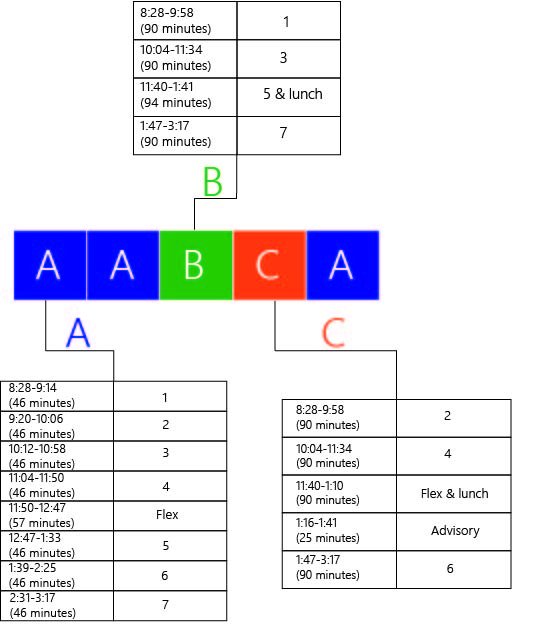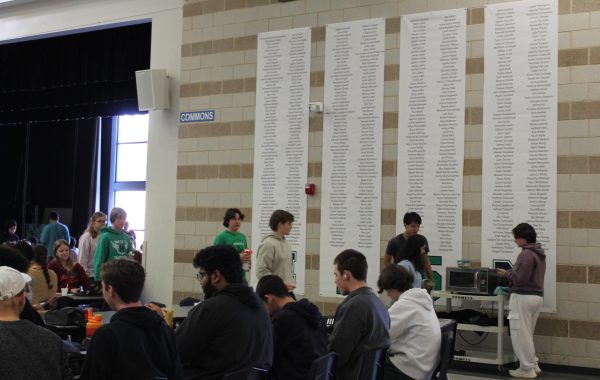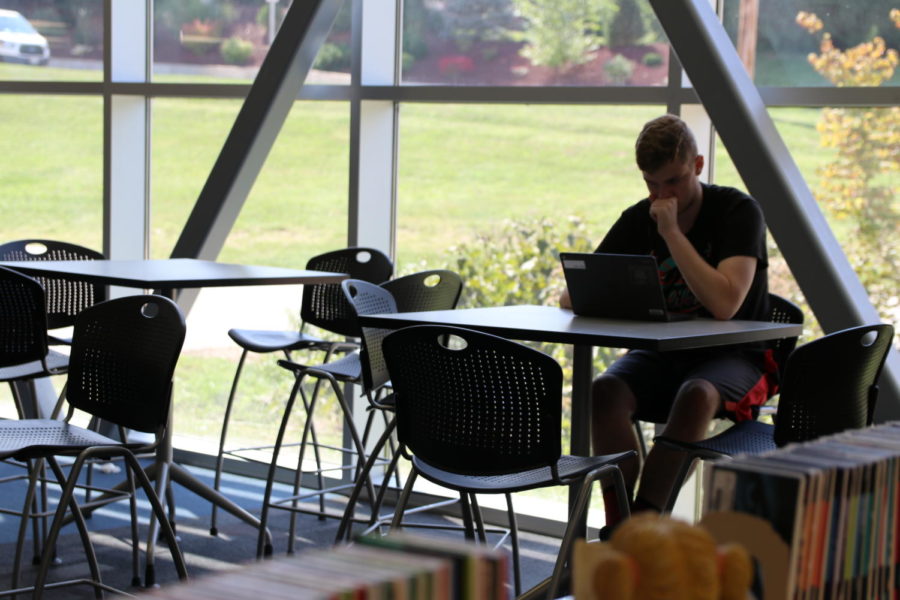RSD Administrators Continue Flex Time Discussion
Media by Tanner Rojewski
Hugo Talbott, senior, works on his Chromebook in the Library.
In the past couple of weeks, administrators around the district have crafted another option for how next year’s schedule might look with the addition .
The newest option, called “Option 4” because students would have four days a week that contain a flex hour, is being considered in all the high schools. This option would allow for about 60 minutes of flex time combined with lunch on A days, no flex time during B days, and 90 minutes of flex and lunch as well as a 25 minute advisory period, similar to a homeroom, on C days. These transitions toward more free flex time and an advisory period serve as a stepping stone for students going into college.
“We are doing this because we know that when our students graduate, they are academically ready for college and career,” Principal Dr. Greg Mathison said. “But what we haven’t done is give them an opportunity to have some freedom during their day. The focus is teaching students how to handle that freedom of time.”
He said this option was thought of by the high school principals and the Scheduling Steering Committee after hearing feedback from teachers. The 90-minute flex time would allow students to seek help from teachers more and make up labs and tests.
The advisory period would help students get guidance to who to see during flex time, how to prepare for the next week and just allowing for individual study time, Dr. Mathison said. In case someone would have to be pulled out of class, he said the advisory period would allow for this because students wouldn’t be missing any lessons.
However, this schedule option wouldn’t affect only the amount of flex time. It also would affect the blocks of classes, specifically seventh hour.
“The staffs in the four high schools have not liked having a class that is standard everyday, never having that ability for the class to be in a block,” Dr. Mathison said. “So in this option, seventh hour, which is standard now, would actually be blocked and standard just like everything else.”
Having seventh hour blocked would benefit students who are in lab based classes during seventh hour, Dr. Mathison said, because they might be missing valuable learning opportunities just because their class is not blocked.
After about 100 staff members responded to a general survey, Dr. Mathison said there has been a very positive feedback, with about 70 percent supporting Option 4.
Dr. Mathison said his priority during this process has been listening to the feedback of not only the staff but also students. One feedback he heard is that most students don’t want a week with four blocked days.
Dr. Mathison also said it is likely next year MHS would follow an AABCA schedule rather than the ABCAA because that would allow weeks that might have a Monday off still start with all classes.
Snigdha Aachi, senior, said the addition of an advisory period could be beneficial for students in not only receiving time to do homework but also having a bit of time to relax.

However, Aachi said the additional block of seventh hour on B days does not sound so beneficial but rather could be better if students had the option to choose between standard and blocked classes.
“I don’t think the cramming of lessons in one and a half hours is going to help students,” Aachi said.
Fran Kremer, guidance department chair, has attended district meetings regarding the schedule options and said she prefers Option 4, not only because of the additional flex time for students to meet with teachers but also due to students being able to be in classes they wish to take.
“It allows more students to take the classes they want to take,” Kremer said. “It also gives us an advisory time when students can connect with staff members and have a home base.”
Kremer said while all the options, including the current blocked schedule, give students better chances of taking their desired classes, Option 4 combines all the benefits of each of the other options while also adding the advisory period which could lead to large improvements in student engagement.
Yesterday and today the district committee met at Eureka to discuss these options and possibly finalize a decision.
Your donation will support the student journalists of Marquette High School. Your contribution will allow us to purchase equipment and cover our annual website hosting costs. You may become a PATRON by making a donation at one of these levels: White/$30, Green/$50, Blue/$100. Patron names will be published in the print newsmagazine, on the website and once per quarter on our social media accounts.

Marta Mieze, senior, is the Co-Editor-in-Chief for the Messenger and the Script Editor for MHSNews. She has been on the Messenger staff since 2017 and...

Tanner Rojewski, senior, is the Production Editor for the Messenger. He is involved in Robotics, National Honor Society, and is an Eagle Scout. He works...







